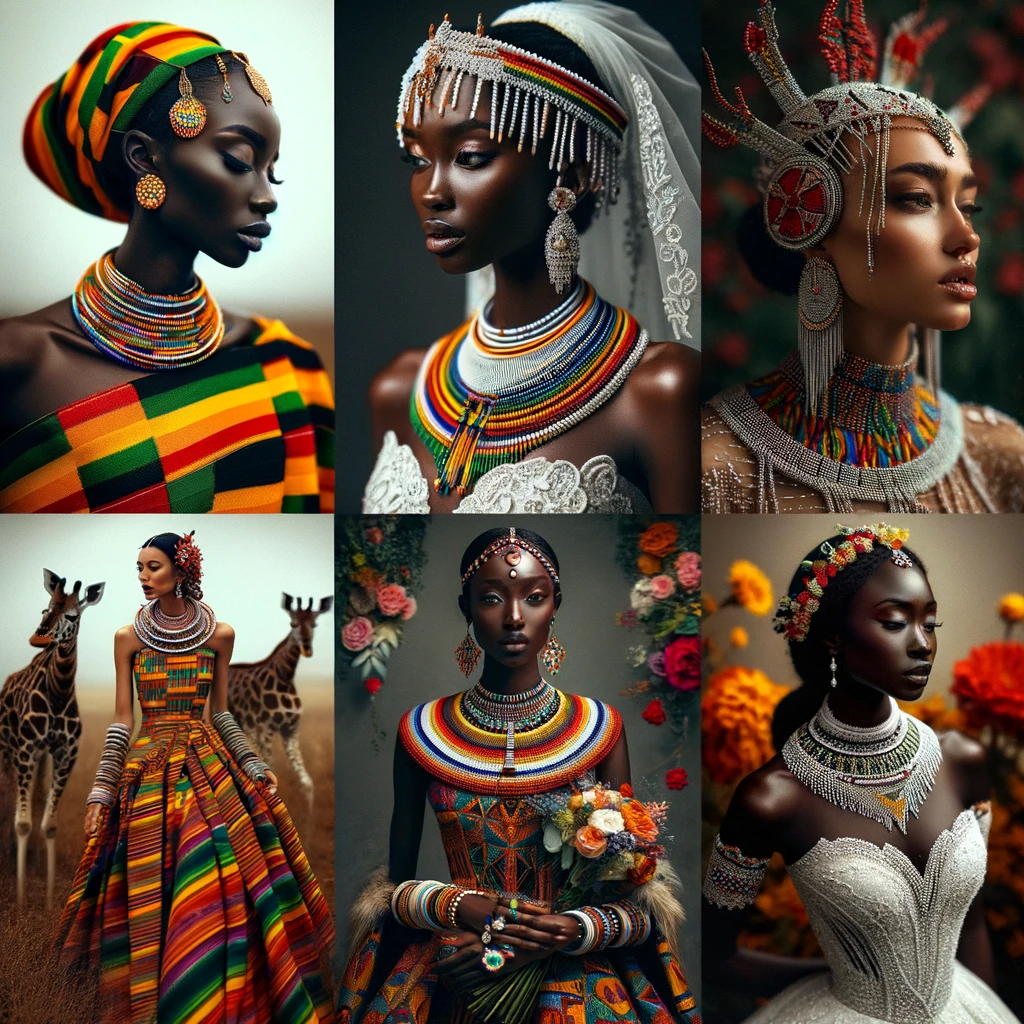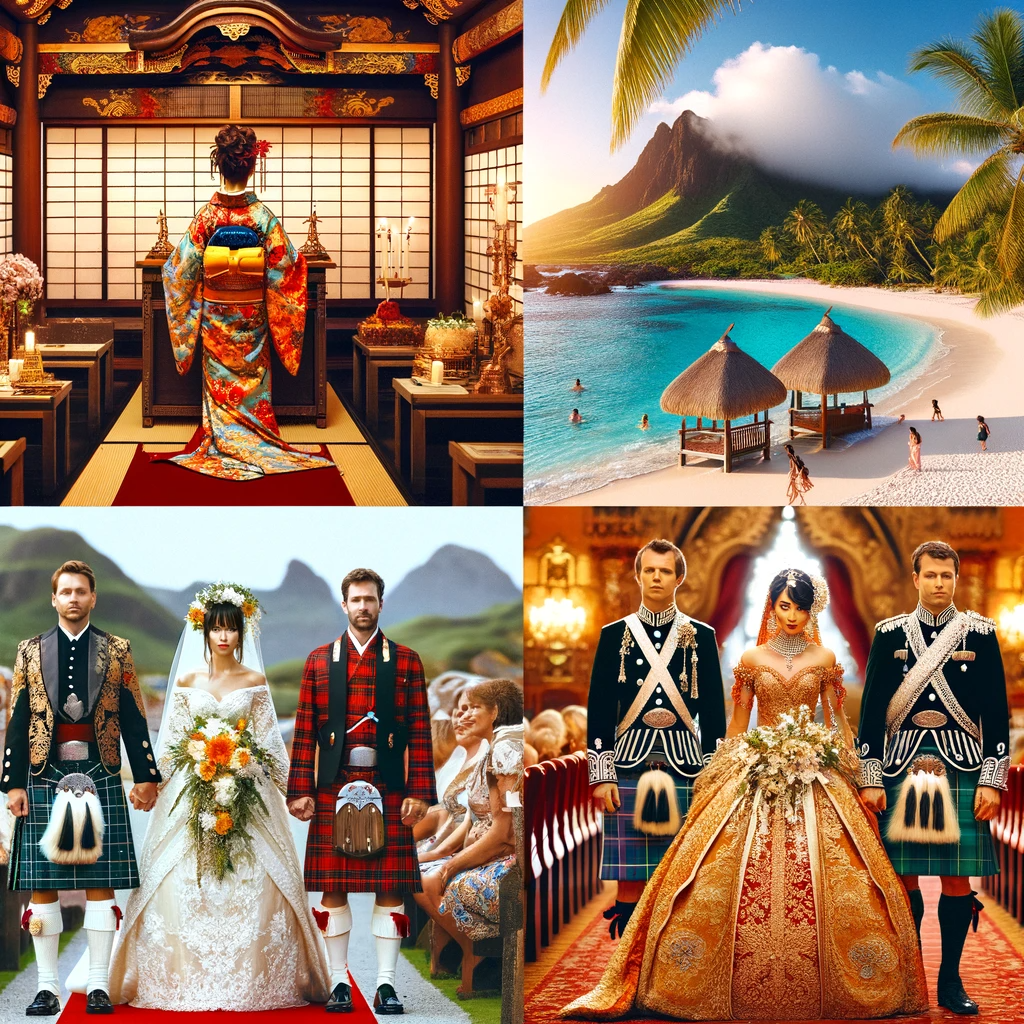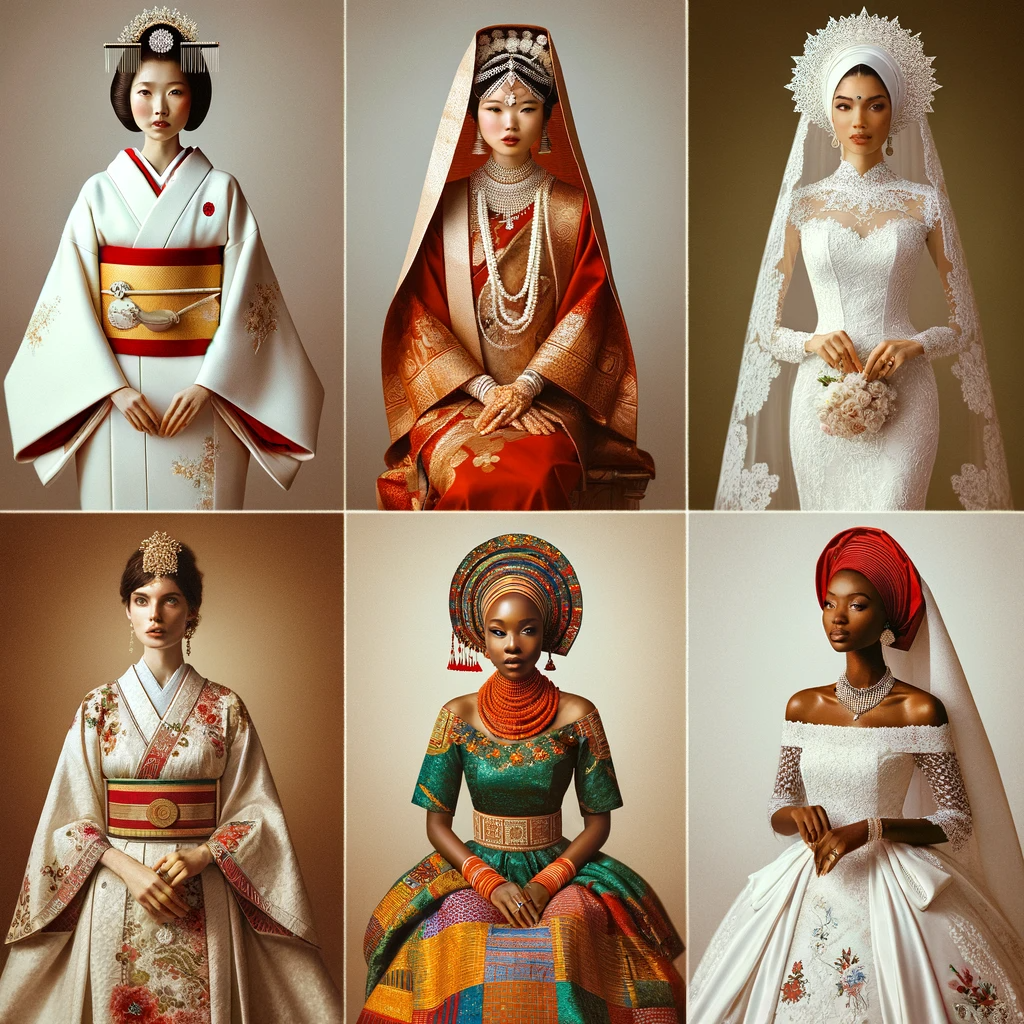Introduction to Cultural Wedding Attire
Weddings are a universal celebration of love, but the way this love is celebrated can vary dramatically across different cultures. One of the most vivid expressions of these cultural nuances is seen in wedding attire. In this article, “Bride Beauty Around the World: Exploring Cultural Wedding Attire,” we embark on a vibrant journey to uncover the rich tapestry of traditional bridal dresses and wedding customs that span the globe. From the intricately embroidered sarees of India to the elegant white gowns of Europe, each piece of attire is a storybook of traditions, beliefs, and beauty.
Our exploration is not just about the visual splendor of these garments but also delves into their symbolic meanings. Why is red a favored color in many Asian weddings, or how did the white wedding gown become a global phenomenon? As we traverse from continent to continent, we’ll unravel these mysteries, offering a glimpse into the diversity of cultural expressions in celebrating love.
Moreover, we’ll look at how these traditional attires are being reinterpreted in modern weddings, and how they harmoniously blend with cultural wedding venues, providing a complete thematic experience. So, whether you’re planning your wedding, attending one, or just love to appreciate the beauty and diversity of world cultures, join us in this fascinating journey of discovery.
The Role of Attire in Wedding Ceremonies: Exploring Symbolism and Cultural Importance
In many cultures, wedding attire is not merely a matter of choice or fashion. It is deeply rooted in traditions and often symbolic of various elements like purity, fertility, good luck, and prosperity. For instance, the white wedding dress, now popular worldwide, originated in Western cultures, primarily symbolizing purity and innocence. However, in Eastern cultures, especially in countries like India and China, red is often the preferred color for bride wear, symbolizing good fortune and auspiciousness.
The intricate designs and patterns in traditional wedding dresses also have their significance. For example, the Celtic knot design in Irish wedding dresses symbolizes eternity and everlasting love, while the delicate embroidery in a Moroccan Kaftan represents prosperity and success.
Overview of Global Wedding Attire: A Sneak Peek into the Diversity
This global tour of wedding attires is a colorful and varied spectacle. In Japan, the traditional bride attire is the ‘Shiromuku,’ a white kimono signifying purity and maidenhood. On the other side of the globe, in Nigeria, brides often wear brightly colored fabrics like Aso Oke with elaborate headpieces, reflecting the country’s rich textile heritage.
Europe, with its diverse cultures, offers a range of traditional wedding attires. While the classic white gown reigns supreme, countries like Greece, Spain, and Italy have their unique versions, often incorporating regional embroideries and accessories.
The significance and beauty of these attires go beyond their visual appeal; they are a celebration of cultural identity and heritage. They tell stories of love, life, and community that have been passed down through generations.
As the world becomes more interconnected, we witness an interesting blend of traditional and contemporary styles in wedding attire. Many modern brides choose to honor their heritage by incorporating traditional elements into their wedding dresses, creating a beautiful amalgamation of old and new.
Asia’s Rich Tapestry
Asia, a continent rich in cultural diversity, offers a mesmerizing array of traditional bride dresses, each telling its own story of heritage, symbolism, and beauty.
Bridal Sarees and Lehengas of India: Colors, Fabrics, and Regional Variations
In India, the bridal attire is as diverse as its culture. The most common traditional bridal wear is the saree, specifically the red saree, symbolizing prosperity and fertility. Different regions in India have their unique style of bridal sarees. For instance, the Banarasi saree from the north is known for its gold and silver brocade, while the Kanjeevaram saree from the south is famous for its vibrant colors and high-quality silk.
Another popular bridal attire in India is the Lehenga, a long, embroidered skirt worn with a matching blouse and a dupatta (a long scarf). The embroidery and embellishments on a lehenga are often very intricate, incorporating traditional motifs and sometimes, precious stones and metals.
Chinese Qipaos and Japanese Kimonos: Their Historical Significance and Modern Adaptations
In China, the traditional bridal dress is the Qipao or Cheongsam, an elegant, form-fitting gown. Traditionally made of silk and adorned with intricate embroidery, the Qipao often features motifs like the dragon and phoenix, symbolizing the balance between male and female energy.
Japanese Kimonos are fascinating. The traditional attire is the Kimono, specifically the Uchikake, a type of Kimono worn by brides. It is often white, symbolizing purity, but can also be brightly colored, adorned with auspicious symbols such as cranes, which signify longevity and good fortune.
These Asian wedding dresses are not just attire; they are a celebration of rich histories and traditions. With modern influences, these traditional dresses have evolved, blending ancient designs with contemporary fashion, giving birth to stunningly modern yet traditionally rooted bridal wear.

European Elegance
Europe, with its rich history and diverse cultures, presents an array of elegant and traditional wedding attires, each reflecting the heritage and aesthetic sensibilities of its region.
The Classic White Gown and Its Variations: Tracing its Origins and Adaptations Across Europe
The white wedding gown, a symbol of purity and elegance, has its roots in European culture. Popularized by Queen Victoria in the 19th century, this iconic garment has become a global wedding staple. However, variations abound across Europe. In Greece, for instance, the traditional bridal dress is often embroidered with gold and silver, and in Italy, brides may wear a green dress or accessory for good luck.
Traditional Attires of Eastern Europe: Unique Wedding Costumes from Countries like Russia and Ukraine
Eastern Europe boasts some of the most colorful and distinctive traditional wedding attires. In Russia, the Sarafan, a long, trapeze-shaped dress, is often part of the bridal wear, richly embroidered and paired with a headdress called Kokoshnik. Ukrainian brides traditionally wear a Vyshyvanka, a dress embroidered with symbolic patterns and colors, representing health, love, and fertility.
These traditional European wedding attires, steeped in history and symbolism, offer a glimpse into the continent’s cultural richness. They remind us of the enduring power of traditions, even in an age where modernity seems to prevail.

African Wedding Attire Traditions
Africa’s wedding attire is a spectacular showcase of the continent’s vast cultural diversity. From the intricately beaded gowns of the Maasai to the rich, woven Kente of Ghana, each piece is a testament to the continent’s rich traditions and artistry.
Colorful Kente and Beaded Gowns: The Significance of Colors and Designs in African Bridal Dresses
In many African cultures, wedding attire is a vibrant affair, full of colors and patterns, each with its own meaning. The Kente cloth of Ghana is particularly renowned. Originally worn by royalty, this handwoven fabric features complex designs and bold colors, each symbolizing different aspects of life and philosophy.
Another notable tradition is the Maasai wedding attire. Maasai brides often wear intricately beaded necklaces and gowns, with each color representing a specific element of their culture — red for courage and strength, blue for energy, and green for the land and health.
Fusion of Traditional and Contemporary: How Modern Brides Are Blending Old and New
In recent times, there has been a beautiful blend of traditional and contemporary styles in African wedding attire. Modern brides often choose to incorporate traditional elements into their gowns, creating a unique and personal statement. Designers are reinterpreting traditional garments with a modern twist, using ancient motifs and fabrics in contemporary bridal designs.
This fusion not only honors the rich cultural heritage but also showcases the dynamic and evolving nature of African fashion. It is a celebration of the past, present, and future, woven into the fabric of African weddings.

Cultural Wedding Venues and Attire Harmony
The harmony between a wedding venue and the attire worn by the bridal couple enhances the thematic consistency of the ceremony, creating a truly immersive cultural experience.
Matching Attire with Venues: How Couples Choose Attire That Complements Their Cultural Venue
The choice of venue often influences the style of wedding attire. For instance, a traditional Japanese ceremony in a Shinto shrine calls for the classic elegance of a Kimono. Similarly, a beach wedding in the Caribbean might inspire a more relaxed, tropical-themed bridal outfit. This thoughtful matching of attire to venue not only reflects the couple’s cultural heritage but also adds to the aesthetic coherence of the wedding.

The Complete Cultural Experience: Enhancing the Thematic Consistency of Weddings Through Venue and Attire
Beyond aesthetics, the congruence between venue and attire plays a significant role in imparting an authentic cultural experience. A Scottish castle as a venue, for instance, is perfectly complemented by traditional Highland dress, including kilts and tartans. In an Indian palace setting, the richly embellished lehenga or sherwani resonates with the grandeur and opulence of the surroundings.
This synergy creates a more immersive and meaningful celebration, deeply rooted in cultural authenticity. It’s not just about looking the part but about embodying the essence of one’s heritage, making the wedding a memorable homage to cultural traditions.
